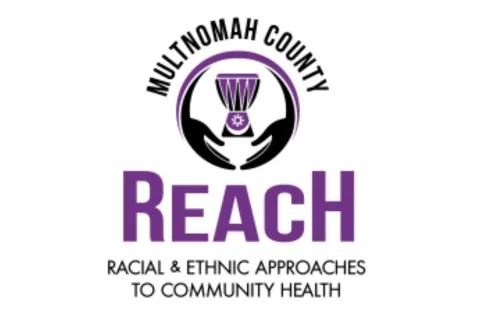
Racial and Ethnic Approaches to Community Health (REACH) aims to prevent chronic diseases (like diabetes and cardiovascular disease) through culturally-specific programming and outreach.
We work with the ACHIEVE (Action Communities for Health, Innovation and Environmental Change) Coalition, other government programs, and community partners to improve the health of Black and African communities in Multnomah County.
How We Work
Multnomah County's REACH program focuses on three strategy areas.
- Increase access to healthier foods through food hubs and explore innovative practices and enhance healthier food procurement sales.
- Establish healthy nutrition standards(i.e. childcare settings, schools, faith-based settings, jails, etc.)
- Make improvements to local programs/systems (i.e. SUN School’s Food Pantries and WIC’s Farm Direct Nutrition Program)
Physical Activity and Built Environment
- Establish new or improved pedestrian, bicycle, or transit transportation systems that are combined with new or improved land use or environmental design
- Implement Active People Healthy Nation, a national initiative led by the CDC to promote the health benefits of increased physical activity and encourage young people and adults to meet the minimum physical activity guideline (brisk walking, biking) by being physically active for at least 60 minutes a day.
- Create a community of practice by connecting community to culturally specific lactation resources.
- Expand access by creating new lactation spaces and supporting the training if Black and African certified lactation consultants
How it All Started
In 2014, Multnomah County earned the 3-year, $3 million Centers for Disease Control and Prevention grant to work within the county's African-American/Black communities. There are 49 other counties that receive the CDC REACH grant. Each focuses on specific underserved racial and ethnic populations in their area.
Through the research of a prior grant, Multnomah County recognized the need to end health disparities within the African-American communities.
